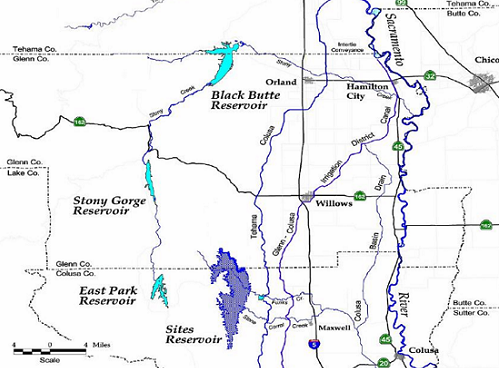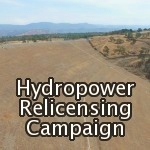
Location of the proposed Sites Reservoir. Source: California Department of Water Resources NODOS
CSPA, AquAlliance and the California Water Impact Network submitted comments on January 12, 2018 on the proposed Sites Reservoir Draft Environmental Impact Report/Draft Environmental Impact Statement (DEIR/DEIS). The proposed Sites Project would create a $4 billion reservoir outside of Maxwell, Colusa County, in the Sacramento Valley. The reservoir would be built “off stream” in a valley and would store up to 1.8 million acre-feet of water. The reservoir would divert flows from the Sacramento River, mostly in winter.
CSPA finds the DEIR/DEIS is deficient for multiple reasons.
The DEIR/DEIS does not fully describe proposed Project operations, who will operate the project and to whom project operators will be held accountable. It does not analyze alternative operational scenarios or analyze their impacts. It does not analyze operations under alternative regulatory constraints, such as constraints more stringent than existing inadequate regulatory constraints for the Sacramento River and the Bay-Delta estuary.
Project proponents argue that the Project will allow greater flexibility for operation of the State Water Project (SWP) and Central Valley Project (CVP). However, the DEIR/DEIS does not describe how operators will integrate the operation of Sites Reservoir with the operation of the State Water Project and Central Valley Project. The discussion of water rights in the document is muddled and perfunctory and inspires more questions than it provides answers.
The Sites Authority has marketed its Project to the California Water Commission and others as environmentally beneficial. As stated in CSPA’s comments, “the objective opportunity to create environmental benefits does not in itself create those benefits.” Assuming there are environmental benefits to be had, they would require a clear project description, commitments and enforceability. The Sites DEIR/DEIS is several steps removed from all of these. As they stand today, the Sites Project is largely conceptual, its environmental benefits are at best aspirational, and its environmental document is deficient and must be recirculated.









